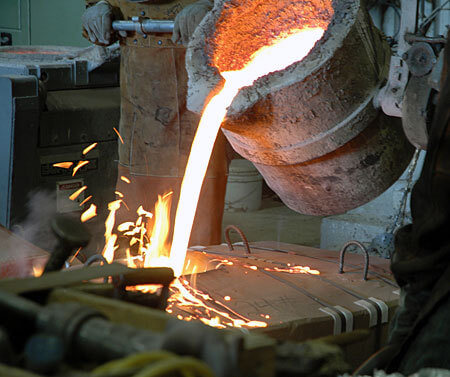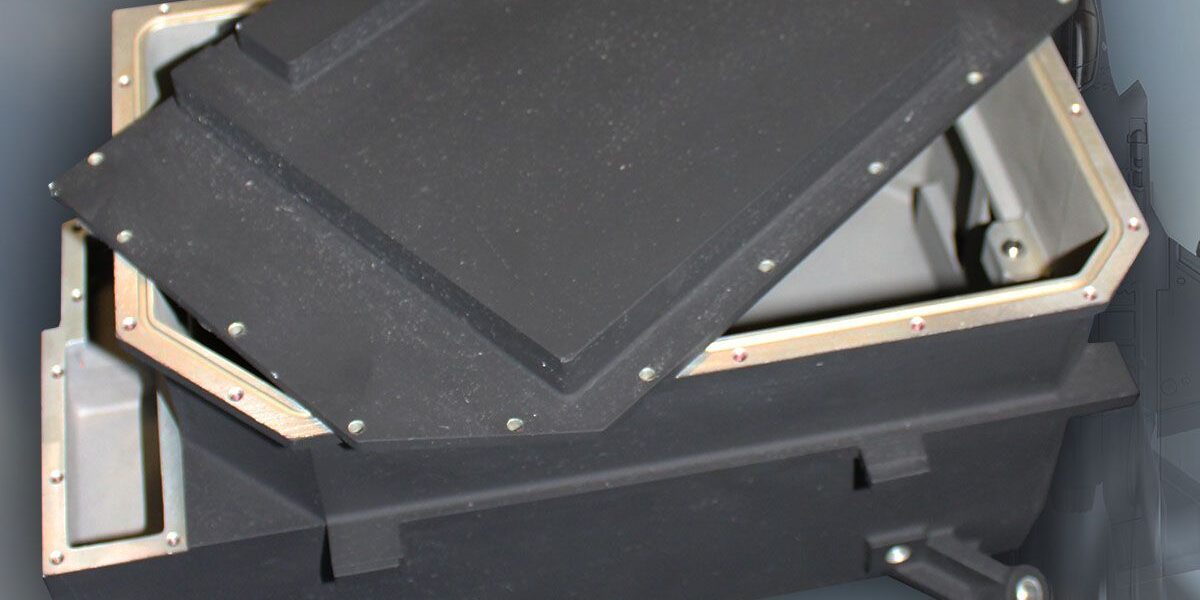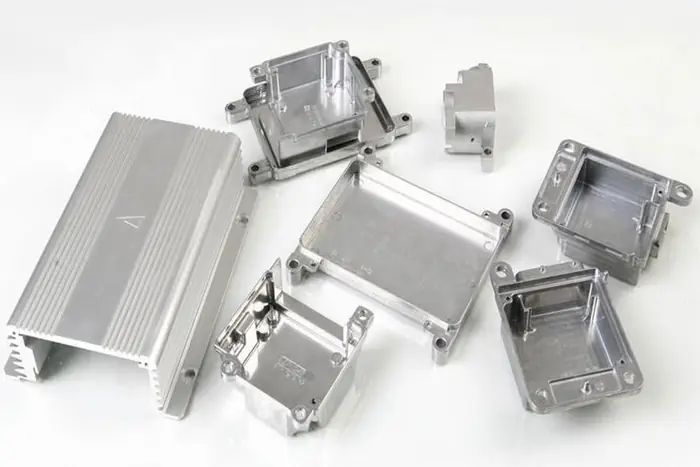Understanding the Environmental Benefits of Light Weight Aluminum Factory Techniques
Aluminum factory techniques play an essential duty in advancing sustainability within the manufacturing sector. By executing sophisticated reusing methods and energy-efficient methods, these methods considerably minimize waste and carbon footprints. Cutting-edge casting methods better improve resource preservation efforts. As sectors increasingly prioritize environmental duty, comprehending the full influence of these techniques comes to be crucial. What details developments are leading the method in this transformation?
The Role of Aluminum in Sustainable Manufacturing
Many materials add to sustainable manufacturing, light weight aluminum stands out due to its one-of-a-kind residential or commercial properties and recyclability. This lightweight metal is not just durable but likewise has exceptional deterioration resistance, making it an ideal selection for numerous applications, from auto to construction. Its high strength-to-weight proportion leads to energy financial savings throughout transport and use. Light weight aluminum can be recycled indefinitely without losing its integral high qualities, advertising a circular economic climate.
The manufacturing procedure of aluminum has actually progressed, integrating energy-efficient techniques that decrease carbon impacts. By utilizing renewable resource resources, manufacturers are significantly lessening the environmental influence connected with light weight aluminum production. In addition, the usage of recycled aluminum needs significantly much less power contrasted to extracting and improving main aluminum, causing reduced greenhouse gas discharges. As markets seek sustainable options, aluminum's convenience and environmentally friendly characteristics setting it as an essential material in the search of greener production techniques.
Advanced Recycling Techniques in Aluminum Foundries
Advanced reusing techniques in light weight aluminum factories are changing the way scrap light weight aluminum is refined and recycled. Cutting-edge methods, such as closed-loop recycling systems, make it possible for foundries to redeem aluminum from manufacturing waste and obsolete products efficiently. These systems decrease worldly loss and improve the high quality of recycled light weight aluminum, making it a practical choice to main light weight aluminum manufacturing.
Furthermore, progressed arranging innovations, consisting of automated optical sorting and X-ray fluorescence, improve the separation of aluminum from other materials, making certain higher purity degrees in recycled results. This accuracy minimizes contamination, which can compromise the honesty of the last product.
Additionally, the combination of innovative melting technologies, such as induction melting and energy-efficient heaters, improves the reusing process, lowering energy intake. Jointly, these innovations add to a more lasting aluminum market by lowering reliance on virgin materials and lowering greenhouse gas exhausts connected with aluminum production.
Energy Efficiency Improvements in Foundry Operations
Energy effectiveness enhancements in aluminum foundry operations can significantly enhance sustainability practices. Applying waste warmth healing systems allows shops to repurpose excess power, lowering total energy consumption. Furthermore, improvements in procedure automation streamline operations, resulting in lowered waste and maximized resource use.
Waste Warm Healing
Implementing waste heat healing systems in aluminum factories greatly boosts power effectiveness by capturing and recycling excess thermal power produced during production processes. These systems promote the conversion of wasted warm into useful energy, which can be utilized for numerous applications within the shop, such as powering or pre-heating products equipment. By recovering warmth that would certainly or else be removed right into the setting, foundries can significantly decrease their overall power intake and greenhouse gas exhausts. This approach not just lowers operational expenses yet likewise promotes lasting methods within the industry. Furthermore, the fostering of waste warmth healing technologies lines up with regulative requirements targeted at lowering environmental impact, making it a necessary part of modern aluminum foundry operations.
Refine Automation Perks
Automating procedures in light weight aluminum factories can substantially improve energy efficiency by maximizing manufacturing process and lowering waste. By implementing advanced technologies such as robotics and maker learning, factories can improve operations, lessening unneeded energy intake. Automated systems assist in precise control over temperature level and product handling, making sure that energy is used just when required. Additionally, real-time monitoring enables immediate modifications, decreasing the risk of energy loss. The combination of automation not only enhances efficiency however likewise lowers functional costs, making foundries more competitive. Therefore, these energy-efficient practices contribute significantly to sustainability objectives, decreasing the environmental impact of aluminum manufacturing while meeting increasing market needs - Precision aluminum casting. Boosted energy performance with automation represents an essential step in the direction of greener factory operations
Minimizing Waste Via Innovative Casting Methods
Ingenious spreading methods play a crucial function in reducing waste in aluminum shops. Techniques such as sophisticated molding visit this site and the utilization of recyclable materials substantially minimize manufacturing scrap. These methods not only boost efficiency but likewise add to a more lasting manufacturing process.
Advanced Molding Techniques
As markets progressively focus on sustainability, advanced molding strategies in aluminum foundries become reliable solutions for minimizing waste. These ingenious methods, such as 3D printing and accuracy mold and mildew production, substantially boost the effectiveness of the spreading procedure. By utilizing computer-aided design (CAD) and simulation innovations, suppliers can optimize mold and mildew geometry, lessening material use while maintaining item honesty. In addition, advanced techniques make it possible for the manufacturing of complex shapes that conventional approaches can not accomplish, minimizing the demand for additional machining and thus lowering scrap material. The adaptability of these methods permits fast prototyping, additional lowering preparations and power usage. Generally, the application of sophisticated molding techniques represents a vital action towards ecologically liable light weight aluminum manufacturing, straightening with worldwide sustainability objectives.
Recyclable Product Use
Recyclable materials play an essential duty in reducing waste within light weight aluminum foundries, transforming the casting landscape through their efficient use. By including scrap aluminum and various other recyclable components into the manufacturing procedure, shops can greatly lower the demand for virgin materials. This not only preserves all-natural resources but likewise minimizes energy intake associated with mining and refining. Cutting-edge casting methods, such as die spreading and sand casting, permit smooth combination of these materials, guaranteeing top quality results. The usage of recyclable materials fosters a circular economy, where sources are continually recycled and repurposed, lowering landfill contributions. Eventually, the tactical use recyclables improves sustainability while promoting cost-effectiveness in aluminum shop operations.
Decreasing Production Scrap

Life Cycle Assessment of Light Weight Aluminum Products
Although aluminum is extensively recognized for its light-weight and sturdy residential or commercial properties, a comprehensive Life process Evaluation (LCA) exposes the ecological impacts associated with its manufacturing, usage, and disposal. The LCA process analyzes the energy consumption, greenhouse gas discharges, and source depletion linked to light weight aluminum products from removal of bauxite ore to end-of-life management. Primary aluminum production is energy-intensive, commonly depending on nonrenewable fuel sources, which adds considerably to carbon footprints. In contrast, recycling light weight aluminum uses substantial ecological advantages, as it utilizes just a portion of the energy required for key production. The reusing procedure reduces landfill waste and conserves all-natural sources. The LCA likewise considers the product's longevity and potential for reuse, emphasizing the importance of lasting layout. Generally, recognizing the life process influences of aluminum items is necessary for making educated decisions that focus on environmental sustainability within the market.
Situation Studies: Successful Sustainable Practices in the Sector
The aluminum industry has begun to accept innovative lasting techniques that attend to the ecological difficulties determined in Life Cycle Evaluations. One remarkable situation is a leading factory that applied a closed-loop recycling system, significantly minimizing waste and energy intake. By reusing scrap light weight aluminum in manufacturing, the facility accomplished a 40% decrease in its carbon footprint.
One more instance includes a manufacturer that took on eco-friendly energy sources, powering its operations with solar and wind power - aluminum casting. This shift not only decreased greenhouse gas emissions however additionally boosted the business's online reputation among environmentally mindful customers
Additionally, a 3rd foundry has actually bought sophisticated spreading strategies, which optimize material usage and reduce problems, better lowering resource usage. These case research studies show that the aluminum industry can integrating sustainable methods, showing both ecological obligation and economic viability, inevitably contributing to a much more lasting future.
Frequently Asked Inquiries
Just How Does Aluminum Contrast to Various Other Steels in Sustainability?
Light weight aluminum is normally thought about much more lasting than lots of metals because of its recyclability, reduced power demands for manufacturing, and lowered ecological effect. Its lifecycle effectiveness exceeds that of steel and copper in different applications.
What Is the Carbon Footprint of Aluminum Shop Processes?
The carbon footprint of light weight aluminum factory processes differs, usually varying from 4 to 15 metric lots of carbon dioxide per ton of aluminum produced. Elements influencing this include energy resources, technology, and the efficiency of operations.
Exist Wellness Threats Connected With Aluminum Foundry Workflow?

What Are the Costs Connected With Lasting Aluminum Techniques?
The expenses connected with sustainable aluminum strategies consist of greater first financial investments in technology, possible increases in functional expenditures, and recurring maintenance. These are usually balanced out by lasting cost savings and lowered environmental effect.

How Does Aluminum Recycling Effect Resident Communities?
Light weight aluminum reusing positively effects neighborhood neighborhoods by creating tasks, minimizing landfill waste, and reducing energy costs. It cultivates economic development and promotes ecological stewardship, bring about healthier living conditions and boosted area engagement in sustainability efforts.
Furthermore, the use of recycled aluminum needs significantly less power contrasted to removing and refining main light find here weight aluminum, leading to reduced greenhouse gas discharges. Advanced reusing techniques in aluminum foundries are reinventing the means scrap light weight aluminum is refined and reused. Precision aluminum casting. Carrying out waste heat healing systems in light weight aluminum factories greatly boosts energy efficiency by catching and reusing excess thermal energy produced throughout production processes. Automating processes in aluminum factories can significantly improve power efficiency by maximizing manufacturing operations and decreasing waste. The carbon impact of light weight aluminum foundry processes differs, typically varying from 4 to 15 metric bunches of CO2 per ton of aluminum produced